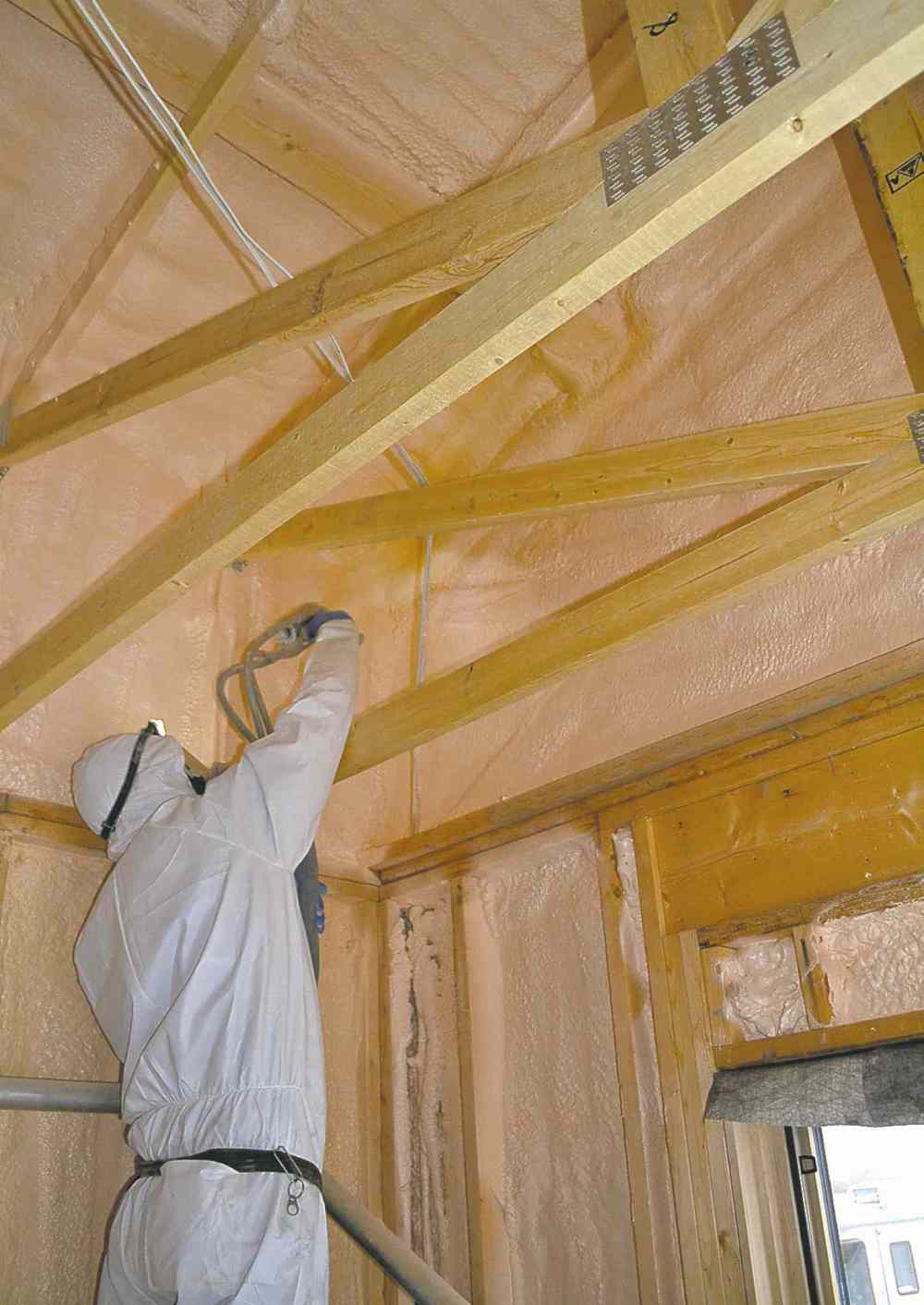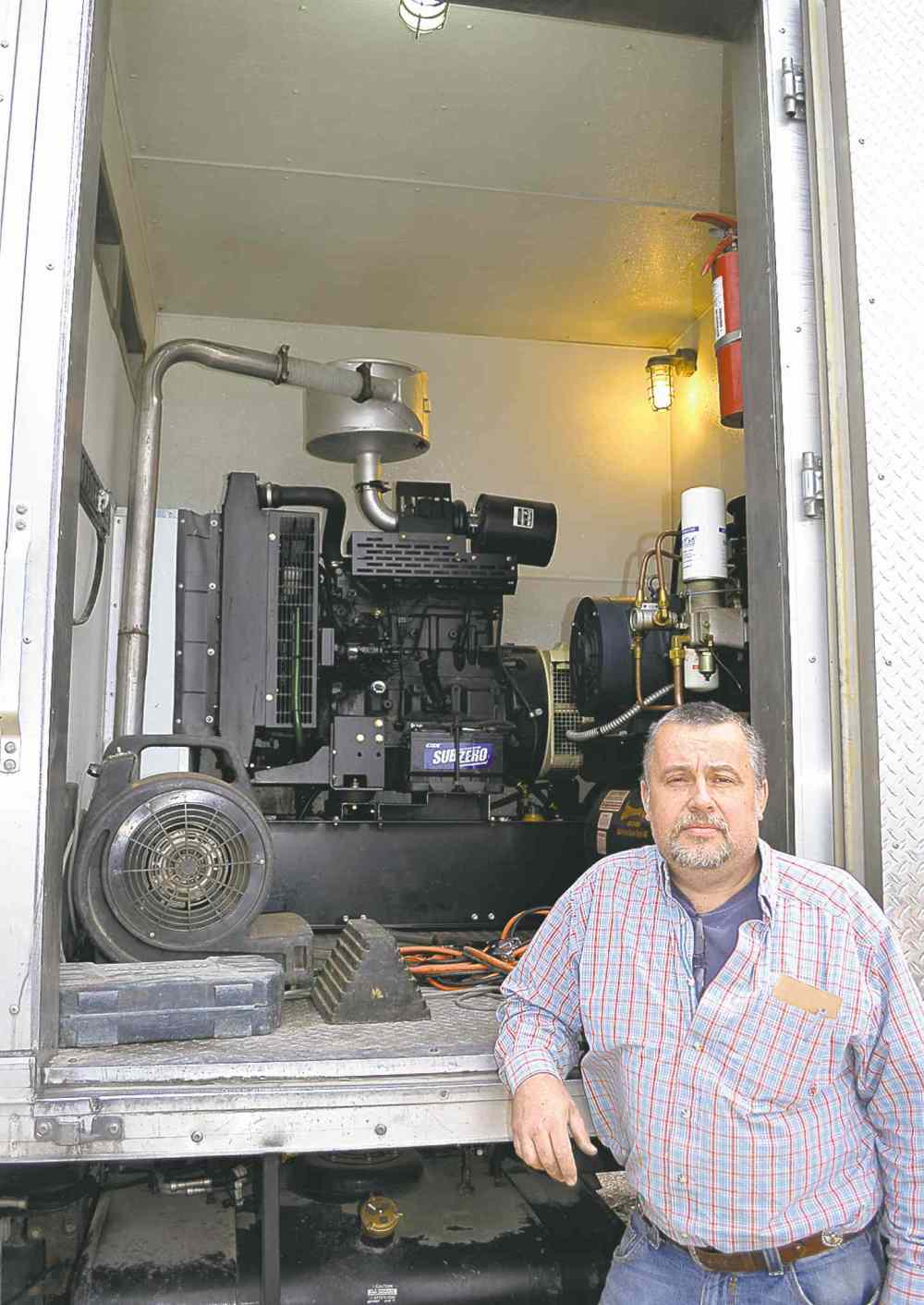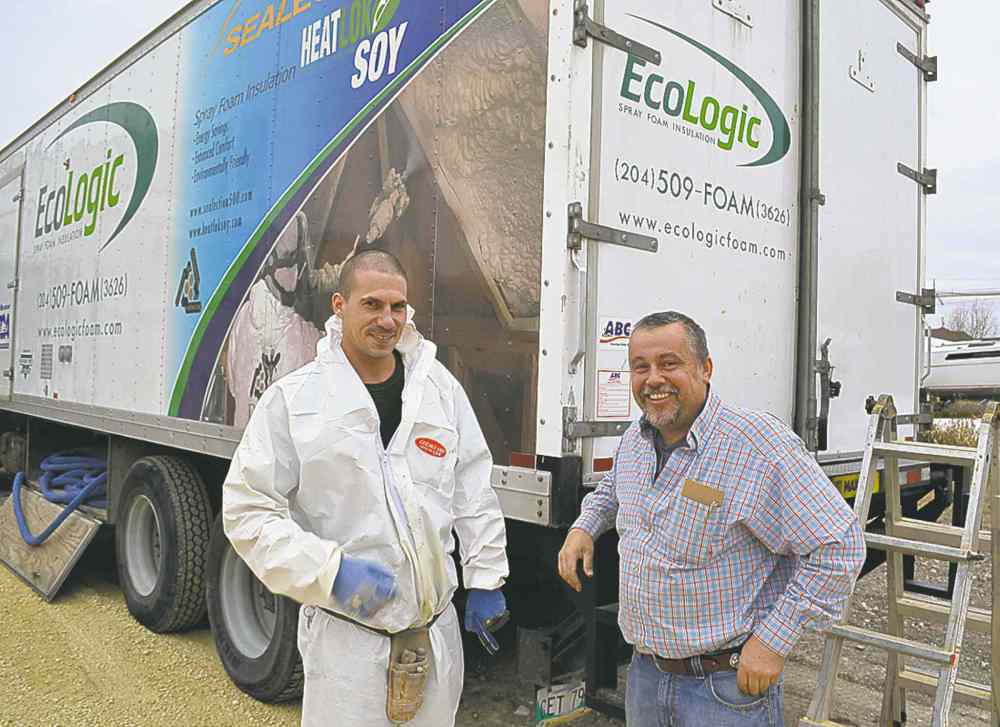RENOVATIONS: Foam framed
News stories miss key details in bid to slag spray-foam insulation
Advertisement
Read this article for free:
or
Already have an account? Log in here »
To continue reading, please subscribe:
Monthly Digital Subscription
$19 $0 for the first 4 weeks*
- Enjoy unlimited reading on winnipegfreepress.com
- Read the E-Edition, our digital replica newspaper
- Access News Break, our award-winning app
- Play interactive puzzles
*No charge for 4 weeks then billed as $19 every four weeks (new subscribers and qualified returning subscribers only). Cancel anytime.
Read unlimited articles for free today:
or
Already have an account? Log in here »
Hey there, time traveller!
This article was published 15/11/2013 (3819 days ago), so information in it may no longer be current.
There’s something fishy about a couple of recent stories concerning off-gassing purportedly caused by the installation of polyurethane spray-foam insulation (PSFI)–yes, the very insulation lauded until recently as a green product used extensively in the U.S. and Canada for more than four decades.
The EPA estimates that the number of homes and buildings in the U.S. that contain PSFI run into the millions, with hundreds of thousands more being added each year.
In Canada there are currently well over 350,000 houses being sprayed per year, with the numbers growing daily because PSFI is considered the best insulation on the market, saving millions of dollars in energy consumption every year, according to a Winnipeg-based PSFI expert who is a board member of the Canadian Urethane Foam Contractors Association (CUFCA), an agency that sustains high industry standards and encourages ongoing professional development.

Interestingly chemical compounds that are a health risk to individuals and the environment are open game for litigious Americans, known for launching class-action suits against the manufacturers of supposedly unhealthy products. It seems odd, therefore, that two-score years after PSFI was introduced to the North American building industry, there have been no major lawsuits registered against the manufacturers or installers of the product.
It seems even more curious that media stories have recently surfaced making claims that people are losing their health and homes to spray polyurethane foam and the chemicals within: How can something so toxic be considered green?
True to form, such alarmist journalism provides no scientific data to back up its claims; instead, the writer relies on the testimony of a husband and wife living in Texas who said they came down with respiratory symptoms, sore throats, congested sinuses and runny eyes after PSFI was installed in their home.
The only whiff of scientific evidence in the article by www.treehugger.com is from the Environmental Protection Agency: “The potential for off-gassing of volatile chemicals from spray polyurethane foam is not fully understood and is an area where more research is needed.” In other words, there is no substantive scientific data to link PSFI to homeowners’ health problems.
In Canada, our national broadcaster recently aired its own version of the PSFI saga Renovation Horror Story, aired just before Halloween. The producers of Marketplace located a couple with two children in Ontario who had been forced out of their multi-thousand-square-foot home by fishy-smelling fumes, apparently emanating from recently installed PSFI in the attic.
A certified indoor air specialist was hired by Marketplace to test the quality of the air in the house. His findings: There was toluene, benzene and other chemicals linked to cancer present in a bedroom directly under the area where the foam was applied. (Linked to cancer means animals exposed to two million times the usual level in urban air off the chemicals can die.) As well, a small amount of formaldehyde was present in the foam itself, surprising because formaldehyde is not used to manufacture PSFI. However, the ubiquitous house sheathing OSB does use formaldehyde as a binding agent. (Some newer forms of OSB have eliminated formaldehyde.) However, it’s quite possible that the small amount of formaldehyde detected was off-gassed by this common product, not the PSFI.
The producers of Marketplace travelled to Florida where yet another couple with a similar lingering PSFI odour problem was located. The couple claimed their young son had become asthmatic two days after the foam insulation was sprayed in their home. Marketplace also interviewed an air expert who claimed there were many people in Florida preparing to launch a suit against PSFI installers: the exact number of litigants shown on a map of the state was six, with a few more sprinkled throughout the American south.
“I wish the producers of Marketplace had contacted me,” said Keith Bowie, owner of Ecologic Spray Foam Insulation and a board member of CUFCA, an organization that tabled regulations for the installation of spray foam for the National Building Code of Canada.
“We had members of our organization inspect the Ontario job and it was not a problem with the foam itself. We failed the job because the material was improperly installed by the company.”
Bowie said CUFCA is a non-profit organization that attempts to police the spray foam industry by enlisting companies throughout Canada for a yearly $600 fee and a small surcharge on the number of kilograms sprayed.
“The difficulty is that there is no mandatory legislation requiring PSFI installers to join the organization,” said Bowie, adding that in Manitoba there were seven spray companies about seven years ago; today there are 40, but only seven are CUFCA members.
CUFCA members are required to have $2 million worth of construction liability, though most carry $5 million, as well as $50,000 liability insurance and a three-year warranty. Moreover, members must be recertified every five years no matter how many years experience they have in the spray business.
“Show me another trade that requires its members to be recertified after its members have been licenced,” said Bowie.

CUFCA also provided the Canadian Construction Material Centre (CCMC) with a colour-coded chart that identifies the manufacturers of the brands of foams sold in Canada, and was instrumental in ensuring every batch of chemical has a CCMC registration number attached to it.
Bowie added that all foam used in Canada must be tested and approved by the CCMC at a cost of up to $175,000. “If it fails, the manufacturer must write another cheque and repeat the process until the foam passes.”
He said the CCMC performs about 100 evaluations with most of them concerned with volatile organic compounds (VOCs) released when foam cures. “We’re very conscious of product quality, odour and fumes from VOCs,” he said.
As a further precaution, CUFCA members are required to submit a report to an independent auditor concerning the conditions at each job site before spraying commences.
“If there is a problem, that report is the first thing that investigators will look at,” said Bowie.
By comparison U.S. foams are required to pass a flame test, but do not need a government registration number and tend to have stronger odours when sprayed.
“It’s possible for a fly-by-night operation to purchase foam from, say, Wisconsin for $500 to $750 compared to $2,800 for a CCMC certified Canadian product. That’s quite an incentive for unscrupulous operators to buy U.S. foam and move it into Canada. That’s one of the reasons our foams are colour-coded. It lets Canadian consumers know exactly what kind and quality of foam they are purchasing.”
Bowie said the Americans are looking at the Canadian model instigated by CUFCA so they can gain some control over their unregulated industry.
Jake Zalud of Caneco Inc. Spray Foam Insulation in Winnipeg said he watched the Marketplace video many times and came to the conclusion that the foam applied to the attic in the Ontario home was installed with a single pass of a gun to a thickness of about four-inches.
“Two inches is the maximum thickness that can be applied at one time for the foam to cure properly. When they cut away a full section of the material in the CBC video, I couldn’t see a division line which occurs between coats when the product is properly applied,” he said.
Zalud said PSFI will not cure correctly if sprayed in a four-inch thick mass because this prevents proper off-gassing which should occur within about 20 minutes after the product is applied.
“I’ve been in the spray foam business for over seven years and I have never had a complaint from a client,” he said.
Sam Maendel of Red River Spray On began to learn about PSFI with his father in Morris forty years ago. Since then, the family-owned and operated company has insulated thousands of homes.

“In that entire time, we’ve had one complaint from a customer. We removed and replaced the foam at no cost. Fortunately, it was a small 200 square foot job. If it had been a large job it could have bankrupted our company,” Maendel said, adding that the CBC documentary was a wakeup call for the industry.
“We’re now in the process of taking out insurance to cover the removal of foam if a job should go wrong,” he said, adding that all clients are being told to get out of the house for 24 hours until the foam has completely cured.
Maendel speculated that the fishy smell associated with the spray foam in the Ontario home likely came from the fire-retardant included in modern PSFIs.
PSFI consists of Side A and a Side B compounds mixed together at a one-to-one ratio under heat and pressure inside the chamber of a gun. Side A contains isocyanates (some people can be naturally sensitive to these chemicals) and Side B is comprised of polyols (alcohols), fire retardants and amine catalysts that form a resin.
If the mixture goes off-ratio, the foam will remain tacky, indicating the resin is too rich. The foam will become chalky or brittle if the isocyanates exceed the amount of resin.
“In either case, a certified sprayer will immediately know there is a problem and will shut down the operation to find the cause of the problem,” said Maendel, adding there are a few possible problems: either the Side A or Side B drum is empty; a faulty pump has caused air pressure to fall off; a heat cable that lets the two chemicals flow freely is not working; or a filter in the gun has become plugged.
“Problems can occur if the gun operator decides to keep on spraying despite these warning signs. Fortunately, to be eligible to purchase a CCM approved foam in Canada all installers must be certified,” said Maendel.
Bowie added that “Contrary to popular opinion, PSFIs are more likely to prevent asthma than cause it because the air-tight insulation stops the infiltration of dust, pollen and other outdoor organic substances that trigger the disease; the high R-value (6.0 per inch), moisture and air seal provided by cured foam make it the best performing insulation on the market.”
Caveat: If you decide to insulate your home with PSFI, do your homework to find an installer with a good track record. Outfits offering the lowest price possible are not usually the most qualified installers. Unless you enjoy a fishy-smell in your home, stick to the companies who use CCMC approved products.


